The Fierce Great Heathen Army And The Invasion Of East Anglia
Ellen Lloyd - AncientPages.com - In the year 865 A.D., the Great Heathen Army, also known as the Great Viking Army, crossed the sea and dramatically changed the history of Britain.
Led by Ragnar Lodbrok's sons Ivar the Boneless, Halfdan Ragnarsson, and Ubba, along with the Dane Viking chieftain Guthrum, the Norse warriors, started the invasion of East Anglia.
Credit: Adobe Stock - Dimart_Graphics
The number of ships and Norse warriors sailing for is uncertain, but historians describe the Army as one of the largest forces of its kind.
The Great Heathen Army Sailed Carrying A Raven Banner
It's no coincidence that the Great Heathen Army was created at this time. It was a tactical decision as the Vikings were aware of the civil war that had weakened the great northern kingdom in England. The instability and uncertainty raging in England gave the Norse warriors opportunities they did not intend to miss.
The Anglo-Saxon Chronicle informs the Viking army carried a raven banner when they reached England.
For the year 878, the Chronicle relates:
"In the winter of the same year, the brother of Ivar and Halfdan landed in Devonshire, Wessex, with 23 ships, and he was killed there along with 800 other people and 40 of his soldiers. The war banner (guþfana) which they called "Raven" was also taken."
According to the Annals of St Neots, the raven banner was created by three of Ragnar Lodbrok's daughters who had "woven that banner and gotten it ready during one single midday's time. Further it is said that if they were going to win a battle in which they followed that signum, there was to be seen, in the center of the signum, a raven, gaily flapping its wings. But if they were going to be defeated, the raven dropped motionless. And this always proved true." 1
The raven was a significant Norse symbol associated with God Odin, who always had two raven companions, Hugin (Huginn) and Munin (Munnin), on his shoulders.
Credit: Adobe Stock - Alejandro
To protect its territory East Anglia made a peace agreement with the Great Heathen Army, allowing the Norse invaders to use its land. East Anglians also provided the Vikings with horses.
"The Norse used it as a staging point for their invasion into Northumbria. By late 866 AD, the Great Heathen Army marched into Northumbria and on November 21st they seized York, which they called Jórvik. York ( Jórvik) had a great defensive and was a strategic stronghold that was well protected by the walls the Roman Army had built for it previously. Kings Ælla and Osberht united their forces and made an attempt to retake York months later on March 21st 867 AD. But two days later on March 23, 867 AD, as they continued their attempt to retake York from the Great Heathen Army, the battle ended when King Osberht was killed and King Ælla was captured. King Ælla was horrifically subjected to traditional Norse warrior practice of the Blood Eagle ordeal by having his ribs torn out and folded back to form the shape of an eagle's wings." 2
King Aelle's terrifying death punishment was an act of revenge for the murder of Ivar the Boneless' father, Ragnar Lodbrok, who had been tossed into a pit of snakes on the orders of Aelle.
According to The Tale of Ragnar's Sons, the invasion of England by the Great Heathen Army was aimed at avenging the death of Ragnar Lodbrok. 3
Vikings Invasion Of Mercia
After seizing control of Northumbria, the Vikings selected King Egbert as a leader and tax collector in Northumbria. Needless to say, King Egbert did what the Vikings told him to do. He was nothing more than a puppet king.
The Great Heathen Army was now focused on the invasion of Mercia, one of the critical Anglo-Saxon kingdoms.
"The King of the area, Burgred, asked for help from The King of Wessex (Ethelred), along with his sibling, named Alfred. Alfred then led a group of men to besiege Nottingham and head into Mercia. But, the seriously outnumbered Vikings would not fight.
A map of the routes taken by the Great Heathen Army from 865 to 878. Credit: Hel-hama - CC BY-SA 3.0
A man known as Henry of Huntingdon described the events about 250 years after they happened, going over the details of that fateful event at Nottingham. Ivar saw that the entire force of the nation of England had gathered there and realized that he was in the weaker position. As a response to this, he managed to talk smoothly and gain peace from his English enemies. He then headed back toward York and stayed there an entire year.
Then, the Mercians decided to pay off the Vikings, who had said they would depart and go back to Northumbria in the fall of the year 868. Then, the Vikings spend their winter months in the city of York. They came back to East Anglia, leading King Edmund to attempt to resist them with forces. The response to this was the capture of King Edmund, who was brutally murdered in Hoxne, a nearby village." 4
In 874, following their winter stay in Repton, the Great Heathen Army drove the Mercian king, Alfred the Great, into exile and finally conquered Mercia. Ceolwulf replaced the exiled Mercian king. Repton was an important place to the Great Viking Army, and archaeologists have suggested Ivar the Boneless may be buried in Repton.
In 876 A.D., Halfdan returned South and shared the land with the other Norsemen in a region known as The Danelaw.
Having fought many deadly battles, the Great Heathen Army was not as numerous as before, and Norse warriors had some trouble controlling certain areas, but they were still a powerful military force.
"In 880 A.D. , the Viking leader Guthrum signed a treaty with King Alfred of the Anglo-Saxons which granted Guthrum rule over a large area of East Anglia, called the Danelaw that was basically Danish territory in England.
Alfred the Great had not given up. He reorganized his Army. He set up a powerful system of fortified towns known as burh using old Roman cities. In 886 A.D., King Alfred managed to recover London and was accepted as an overlord by all the English not subject to the Danes.
King Alfred reorganized his Army. He built ships and fortresses, planning to ring Wessex with them. He also made the Welsh kings his allies. In the 10th century, Wessex's power continued to grow under King Alfred's son, Edward, who put down renewed Danish incursions into Wessex in the Battle of Tettenhall in 910 and moved against Vikings from Ireland who were attempting to conquer Northumbria. Edward also completed his father's planned ring of fortresses. In 912 A.D., Edward and his sister, Aethelflaed, conducted separate campaigns into Danelaw and regained some lands." 5
Actress Millie Brady plays Aethelflaed in the series The Last Kingdom. Credit: IMDb
Widely known as the Lady of the Mercians, Aethelflaed led the counter-offensive against the Norse warriors. Her most outstanding contribution is probably reclaiming territory from the Danish Vikings, who had controlled a large part of England for forty years.
Viking's Permanent Occupation
By 896, the Great Heathen Army was no longer great, but the Norsemen were still in the country. There was no longer a need to continue the attacks. Norse warriors dispersed to East Anglia and Northumbria, while some went south across the sea to the Seine. The invading Great Heathen had torn apart Anglo-Saxon England, and the Vikings had control of northern and eastern England. In contrast, Alfred the Great and his successors had defended their kingdom and remained in control of Wessex.
"Most of the Viking invasions of the 9th century were not acts of piracy, but acts of necessity and desperation as many Norse had suddenly become homeless and were forced to seek out new places to settle. This was when the Viking raids changed into Viking invasions and permanent occupation." 2
The invasion of the Great Heathen Army is an important chapter in England's history, and the Norse warriors' legacy is still alive in many ways.
Written by - Ellen Lloyd – AncientPages.com
Updated on January 24, 2024
Copyright © AncientPages.com All rights reserved. This material may not be published, broadcast, rewritten or redistributed in whole or part without the express written permission of AncientPages.com
Expand for references- Annals of St Neots
- Kane Njord - The Vikings: The Story of a People
- The Saga of Ragnar Lodrok and his Sons - Translated by Peter Tunstall
- Auerbach Patrick -Vikings: The Most Badass Vikings in History
- Conny Waters- What Was The Danelaw? AncientPages.com
- Weiss, D. (2018). The Viking Great Army. Archaeology, 71(2), 50–56.
More From Ancient Pages
-
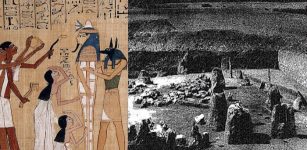 Secrets About ‘Tennessee’s Ancient Egyptian Temple’ Revealed
Civilizations | Aug 15, 2018
Secrets About ‘Tennessee’s Ancient Egyptian Temple’ Revealed
Civilizations | Aug 15, 2018 -
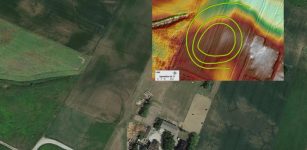 Toruń Massive ‘Roundels’ Date Back 7,000 Years – Archaeologists Say
Archaeology | Jul 6, 2020
Toruń Massive ‘Roundels’ Date Back 7,000 Years – Archaeologists Say
Archaeology | Jul 6, 2020 -
 Mystery Of The 80 Million-Year-Old Sharks’ Teeth In The City Of David
Archaeology | Jul 4, 2021
Mystery Of The 80 Million-Year-Old Sharks’ Teeth In The City Of David
Archaeology | Jul 4, 2021 -
 Was Princess Tadukhipa Of The Mitanni Kingdom Queen Nefertiti?
Civilizations | Mar 15, 2016
Was Princess Tadukhipa Of The Mitanni Kingdom Queen Nefertiti?
Civilizations | Mar 15, 2016 -
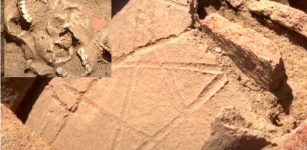 Early Christian Necropolis Unearthed In Sant’Appianu Cathedral In Sagone, Corsica
Archaeology | Aug 3, 2020
Early Christian Necropolis Unearthed In Sant’Appianu Cathedral In Sagone, Corsica
Archaeology | Aug 3, 2020 -
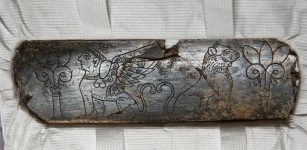 Unique 2,800-Year-Old Ivory Object Unearthed At Hattusa
Archaeology | Nov 14, 2023
Unique 2,800-Year-Old Ivory Object Unearthed At Hattusa
Archaeology | Nov 14, 2023 -
 Gungnir: Odin’s Magical Weapon That Provoked Or Reduced Conflicts In Norse Mythology
Featured Stories | May 12, 2020
Gungnir: Odin’s Magical Weapon That Provoked Or Reduced Conflicts In Norse Mythology
Featured Stories | May 12, 2020 -
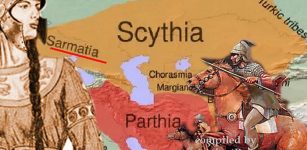 Amage: Sarmatian Warrior Queen/Regent Who Impressed With Remarkable Military Skills
Featured Stories | May 23, 2023
Amage: Sarmatian Warrior Queen/Regent Who Impressed With Remarkable Military Skills
Featured Stories | May 23, 2023 -
 Unusual Ancient Spider Pipes Of Tennessee – Were They Used By Shamans To Enter The Spirit World?
Artifacts | Feb 18, 2018
Unusual Ancient Spider Pipes Of Tennessee – Were They Used By Shamans To Enter The Spirit World?
Artifacts | Feb 18, 2018 -
 More Than A Meteorite: New Clues About The Demise Of Dinosaurs
Paleontology | Dec 5, 2023
More Than A Meteorite: New Clues About The Demise Of Dinosaurs
Paleontology | Dec 5, 2023 -
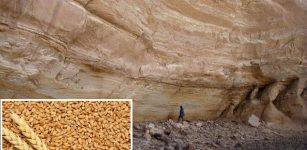 10,000-Year-Old Seeds Offer First Evidence Of Farming In A Green Sahara
Archaeology | Mar 19, 2018
10,000-Year-Old Seeds Offer First Evidence Of Farming In A Green Sahara
Archaeology | Mar 19, 2018 -
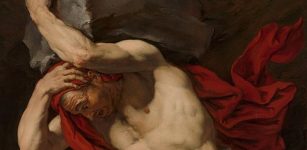 Why Did God Zeus Give King Sisyphus An Eternal Punishment?
Featured Stories | Sep 2, 2019
Why Did God Zeus Give King Sisyphus An Eternal Punishment?
Featured Stories | Sep 2, 2019 -
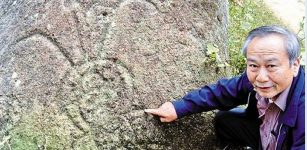 Extraterrestrial Visit Recorded On Stone: They Came From The Stars
Featured Stories | May 4, 2014
Extraterrestrial Visit Recorded On Stone: They Came From The Stars
Featured Stories | May 4, 2014 -
 Archaeologists unearthed artifacts in a 3,700 year-old mine factory
Artifacts | Aug 22, 2015
Archaeologists unearthed artifacts in a 3,700 year-old mine factory
Artifacts | Aug 22, 2015 -
 Incredible Shipwreck With Fascinating Cargo Found 1,200 Years After Sinking In Holy Land
Archaeology | Sep 22, 2022
Incredible Shipwreck With Fascinating Cargo Found 1,200 Years After Sinking In Holy Land
Archaeology | Sep 22, 2022 -
 Did An Ancient Supernova Force Humans To Walk Upright?
Human Beginnings | Oct 24, 2019
Did An Ancient Supernova Force Humans To Walk Upright?
Human Beginnings | Oct 24, 2019 -
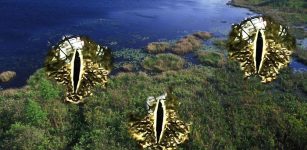 Mysterious Okefenokee Swamp – Fearsome Aerial Beings And Giant Skeletons In Georgia
Featured Stories | Aug 27, 2019
Mysterious Okefenokee Swamp – Fearsome Aerial Beings And Giant Skeletons In Georgia
Featured Stories | Aug 27, 2019 -
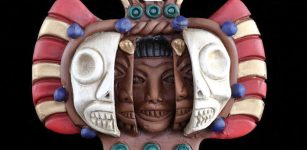 Supay: God Of Death And Underworld And Ruler Over Race Of Demons According To Inca Beliefs
Featured Stories | Jun 7, 2020
Supay: God Of Death And Underworld And Ruler Over Race Of Demons According To Inca Beliefs
Featured Stories | Jun 7, 2020 -
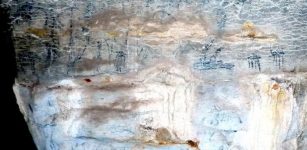 Madagascar Cave Art Hints At Ancient Connections Between Africa And Asia
Featured Stories | Dec 18, 2023
Madagascar Cave Art Hints At Ancient Connections Between Africa And Asia
Featured Stories | Dec 18, 2023 -
 Kussara – Ancient Lost City Of The Old Hittite Kingdom
Featured Stories | Jul 7, 2021
Kussara – Ancient Lost City Of The Old Hittite Kingdom
Featured Stories | Jul 7, 2021




